Looking for places that are unusual, mysterious, beautiful, historic? Like to visit places off the beaten path? These castles in Eastern Europe are breathtaking, and something your custom European adventure could include if you’re looking to travel to Eastern Europe.
Castles of Romania
Romania sits on the shores of the Black Sea, making it one of the easternmost countries of Europe. For centuries, this country has been the source of mystery and legend, including home to many Romani people as well as the setting for fictional characters like Dracula. Like most other countries of the continent, Romania features its share of castles and castle ruins. One of the best preserved and beautiful of the medieval castles is Corvin Castle located in Hunedoara, in the region known as Transylvania. The castle also takes the name of the city of its location as well as that of its builder, John Hunyadi.
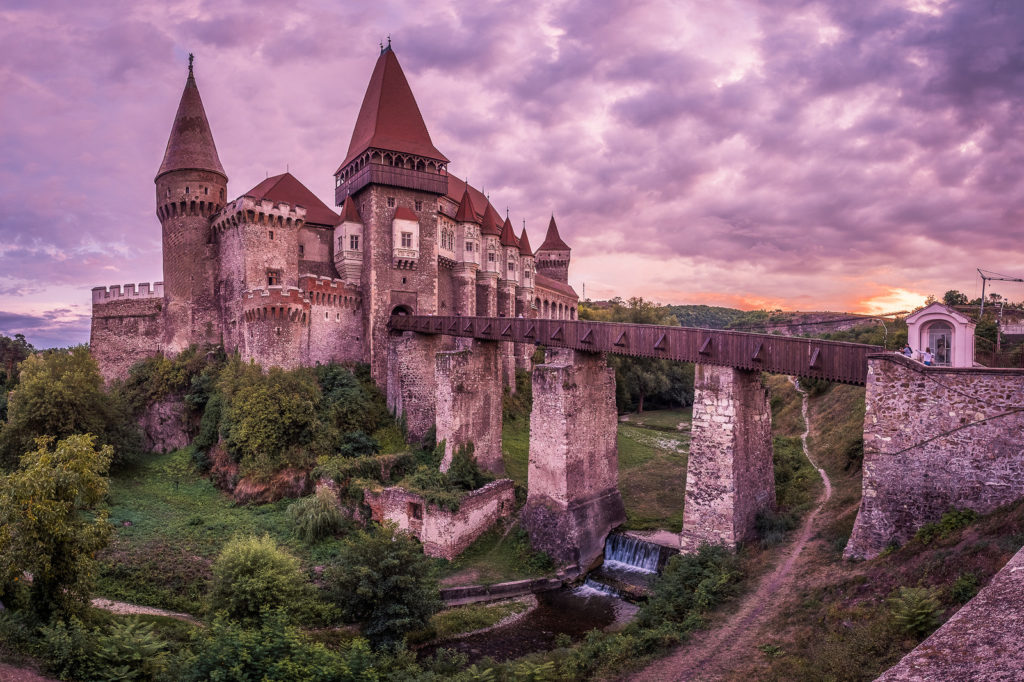
Corvin Castle, Photo by Giuseppe Milo / Flickr
Originally, Romans occupied the site. Situated on a hill overlooking the Zlasti River and dominating the city of Hunedoara, it offered an ideal location for a military outpost. In 1446, Hunyadi, laid out the plans to build on the site as part of his home when he was named regent for the government of the kingdom of Hungary. His design for the opulent palace involved a massive drawbridge that impresses the visitor at the outset and draws the eye to several innovative round and square towers and multicolored roof.
Currently maintained as a museum, the castle represents some of the best medieval art and Renaissance/Gothic architecture. Romania lists it as one of its seven wonders. Contrary to some thinking, Corvin is not the inspiration for home of Bram Stoker’s Dracula. It has, however, been featured in several television ghost specials as well as the movies DragonHeart: Battle for the Heartfire and more recently, The Nun.
Also located in Transylvania, the beautiful Bran Castle nestles among the Carpathian Mountains along side the Bran Gorge. Its Gothic architecture features many turrets and towers covered by contrasting red tile roofs. The castle resembles the home of the fictitious Count Dracula only because author Bram Stoker used an illustration of it to create the story’s location. There is, of course, no real count Dracula, but history records one castle resident being Vlad Tepes or Vlad the Impaler. The son of Vlad Dracul, Tepes was a tyrannical Transylvanian ruler from 1448 to 1776. When the region became a part of Romania in 1918, the royal family converted it to a palace, a much favored by Queen Marie. She loved it so much her daughter eventually brought her heart to the castle where it remains today.
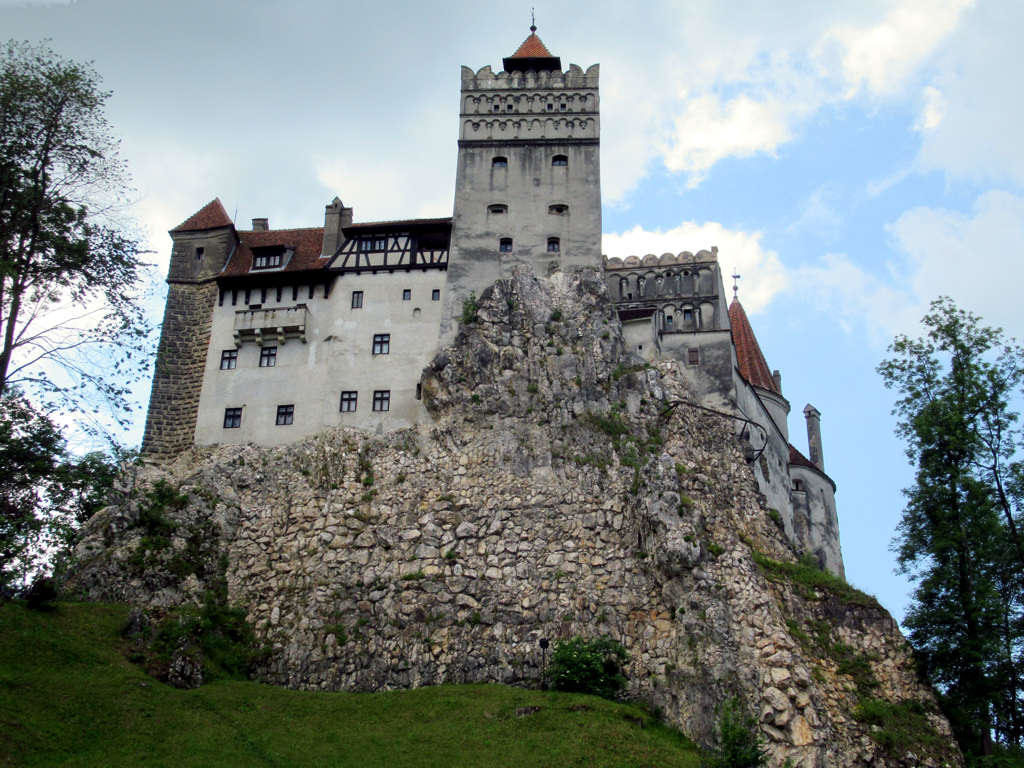
Bran Castle, Photo by David Stanley / Flickr
Bran saw much violent upheavals throughout its history. Now fully restored, visitors may tour through opulent rooms with palatial furniture and view displays of art and historical fashions. The castle also hosts many programs throughout the year, including shows, concerts, cultural events, Christmas celebrations and even cat shows. In addition, due to the fictional relationship to the story of Dracula, the castle produces many Halloween shows.
Castles of Hungary
To the west of Romania, Hungary boasts several fascinating castles. The top-ranked Boldogko Castle lies in the north, towering above the village of Boldogkovaralja, which takes its name from the fortress. Historians believe the castle was built in the mid 13th century after the Mongol invasion. Since that time various owners have remodeled, revised and restored it. The last reconstruction added two towers in 2002.
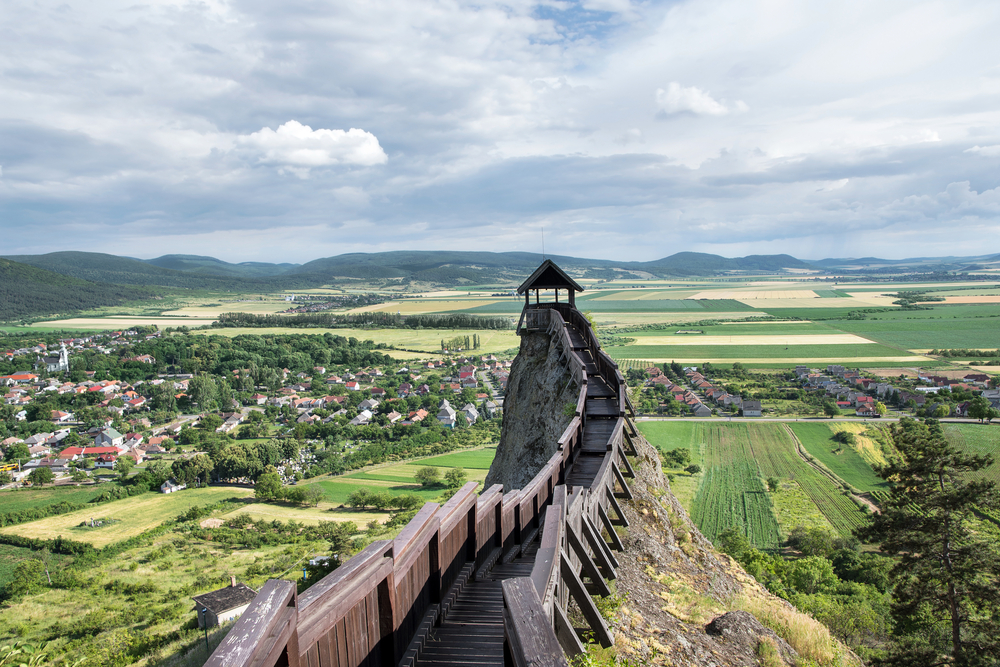
Boldogko Castle
The popularity of the castle as a tourist fascination lies not only in its history and “castleness”, but in the creative displays and programs offered. These include miniature dioramas of important battles of the country, a living smithy and forge, a working grain mill and an interactive torture chamber (for those who enjoy the macabre!) Castle attendants wear medieval costumes and participate in a variety of activities and festivals. Visitors may see a nightly parade of knights, an annual medieval joust and other medieval games. Other programs offer learning about medieval foods, music and arts. A popular restaurant located in the old wine cellar provides a menu of meals typical of the medieval era. A small gift shop allows purchase of souvenirs of the visit. For a true immersion into medieval living, Boldogko Castle is the place to go.
For those interested in archaeology, the castle Esztergom is an active dig. This castle was built in the 11th century onto the site of Roman fortress and served as the royal palace during the centuries the city was the capital of the country. Archaeologists have found evidence of habitation on this site which dates back 22,000 years. It’s location on the Danube River gave the city and the castle strategic importance in the history of the area. Included on the grounds is Hungary’s largest church, the Esztergom Basilica which houses the Primate of the Roman Catholic Church. Also nearby, the Esztergom Castle Museum displays artifacts of history, beautiful paintings, restored frescos and ancient stonework.
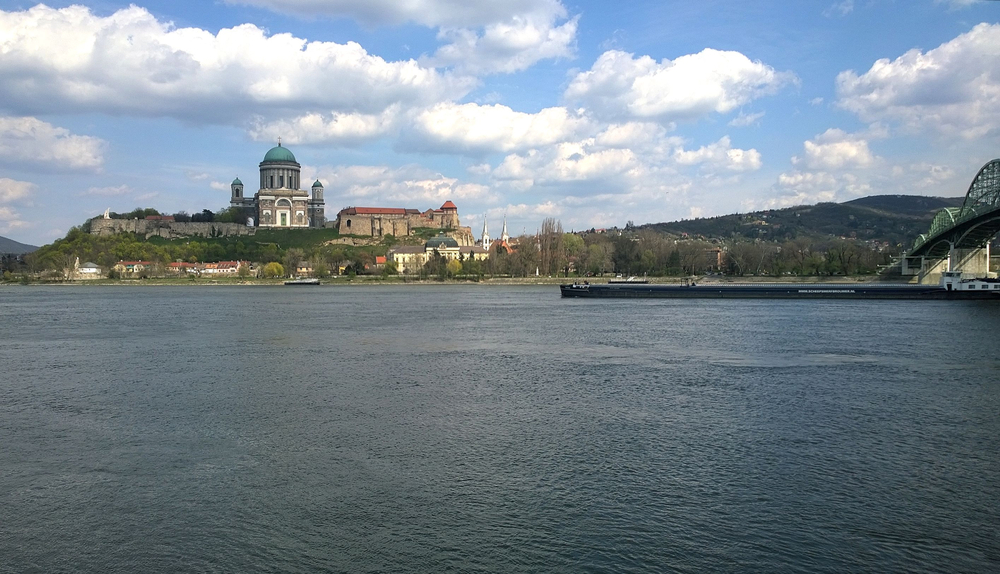
Ezstergom Castle
Ruins of much of the ancient castle was destroyed and buried in the the 17th century during Ottoman-Habsburg Wars. Some of the remains were restored in the 18th century and again destroyed again along with much of the city, in World War II. Ongoing excavation continues to reveal the castle structure. Visitors can explore the castle and view excavated areas from glass floors. Outside, the castle offers spectacular views of the Danube River and the surrounding countryside. The museum features revolving displays and daily activities and programs. The city of Esztergom maintains a mission of expanding the attractions of the castle complex to invite international visitors to appreciate the culture, traditions and history of the area.
Castles of Estonia
Hermann Castle, aka Narva Castle, sits on the Narva River in northern Estonia. Danes settled the area in the 13th century and built the stone castle as a stronghold protecting a crossing on the river. The castle sports a fascinating history, having been used as a royal palace for the Danish kings, a convent by the monastic Livonian Order of the Teutonic Knights, and a sanctuary of the residents of Narva during war. One square tower known as the Herman Tower dominates the fortress walls which surround several courtyards. The castle itself looks across the river to Russia and its adversarial Ivangorod Castle.
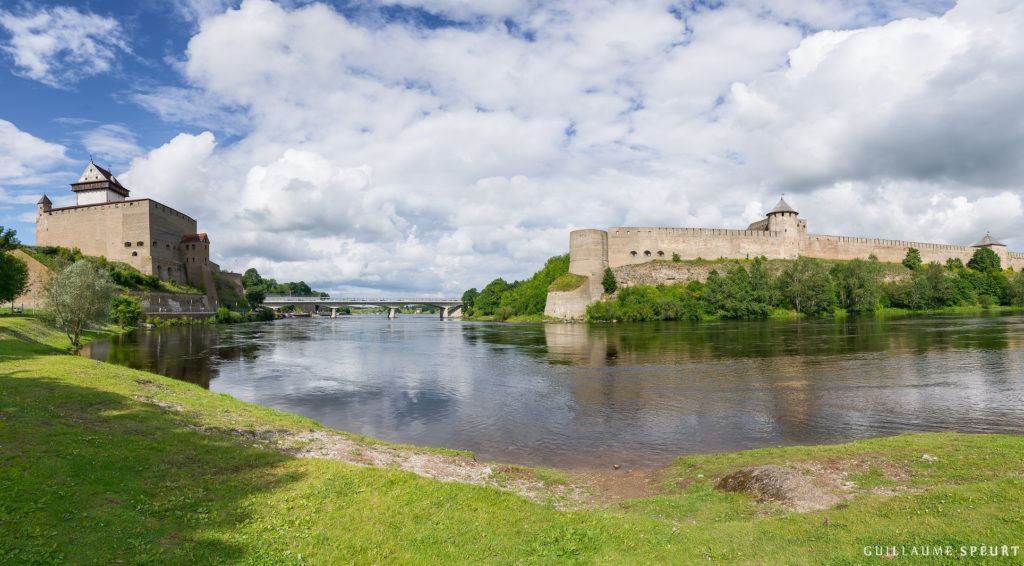
Narva Castle, Photo by Guillaume Speurt / Flickr
The city and castle received heavy damage during World War II, but have progressed in their continuing restoration work that began in the 1970s. The castle and museum offer both temporary and permanent displays of art, furniture and historical items. Other activities include an annual autumn festival, summer open air courtyard events, plus regular concerts and conferences. The Linnaeus garden featuring decorative and kitchen plants is popular with visitors.
To see another of Estonia’s castles, cross the country to the capital city of Tallin, home to Toompea Castle. The German Knights of the Sword built the original part of the castle in the 13th century on the hill dominating the city and established it as the primary place of power over the area. Today the castle continues as the legislative seat for the country that gained independence in 1991. The present building was completed in the 18th century. From the front it appears with a Baroque facade of pink stone. The back retains a medieval look. The rectangular building features a Tall Hermann Tower from which the country’s flag flies daily.

Toompea Castle, Photo by Sergei Gussev / Flickr
With reservations, visitors have free admittance to the castle and may observe parliament’s sessions from the public gallery, tour the rooms such as the parliament reading room, and buy souvenirs from the gift shop. The nearby wall called “The Times We Had” offers panoramic views of the city and the Baltic Sea.
Castles of Croatia
A small country on the Adriatic Sea and backed by the Diniara Alps, Croatia established itself as an independent country in 1991. Only after several years of devastating war has it been able to finally establish secure and stable relations with its neighbors Yugoslavia, Bosnia and Herzegovina. Croatia now eagerly invites and accepts tourist and visitors to enjoy its rich natural beauty and history.
While many tourists prefer the lovely beaches and numerous islands of the coast, the country’s interior offers many attractions. climbing Croatia’s highest mountain, Dinara, ranks as a top attraction. Along the route, hikers encounter a well-known landmark, the ruins of Glavas Castle Dinaric. The medieval fortress was built in the 15th century as one of a chain of forts along the Cetina River as a defense against invasions from the Turks of the Ottoman Empire. Little more is known about the history of the fortress. After it fell into disuse, it collapsed natural erosion and theft of its stones from local residents. It stands today as a haunting reminder of Croatia’s struggles to emerge as a modern nation.
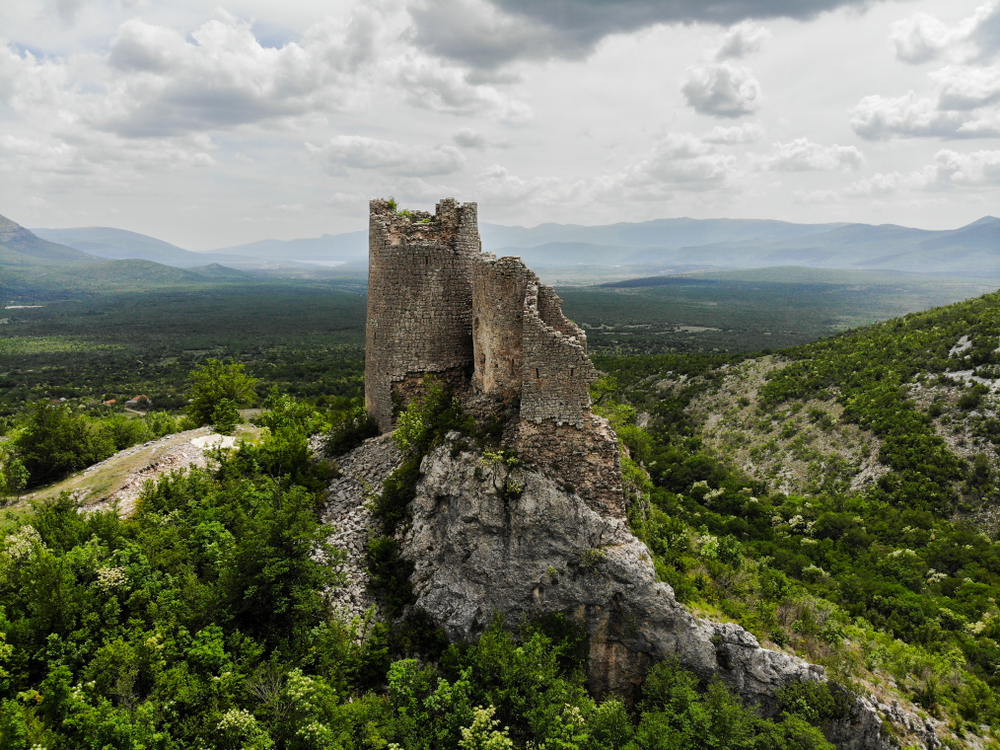
Glavaš – Dinarić Fortress
After years of war, political upheavals and Soviet domination, Eastern Europe is coming into its own as a tourist attraction. The region has everything to offer visitors as that of the more popular Western countries. Cultural foods, events, shopping, shows, architecture, scenery and, yes, castles abound here. Plan your next visit and savor what Eastern Europe has to offer.
Have you always wanted to travel to Eastern Europe? BellaTerra would love to design a custom journey for you to Eastern Europe that caters to your tastes, hobbies, and passions. Read more about our Croatia journeys or contact us today to get started on the trip of a lifetime.
